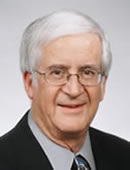When a person becomes aware of a dangerous situation, a time-interval must elapse before he can take defensive action against it. This time interval, commonly called the reaction time, has been found to be about 0.7 second for all normal persons, regardless of their background and training. This suggests that the reaction time depends on some basic aspect of the human physiology-involving the brain, nervous system, and muscles-which does not vary much from person to person.
Several considerations must be made before applying this concept to accident analysis. First, the time interval must be counted from the instant the brain, having perceived the potential danger, decides that an accident is imminent. For example, if a car approaches an intersection and the driver sees another car that might cross his path, some time may go by while he views the second car, but his reaction time-interval does not start until his brain perceives that there Is actually danger of collision.
Second, the 0.7 second reaction time applies only if the person knows what to do to avert the danger. In the case of an impending collision, the use of the brakes to slow the car is well known and in fact is ordinarily habitual, so that there is no delay (other than the reaction time itself) in applying the brakes when necessary. In some cases, however, the driver may try to avoid the collision by steering. If he can immediately decide which way to turn, then the reaction time starts immediately. If he is indecisive, (as he may well be under conditions of panic) then a further delay takes place as he decides which way to turn; thus he cannot start to turn the steering wheel until 0.7 second after this decision is made. By this time, it may be too late to avoid the collision.
There are certain human reactions that occur in less time than 0.7 seconds. These involve reflex actions-as in withdrawing the hand from a hot surface that it has inadvertently touched. The apparent reason for this is that reflexes are instinctive rather than learned, and so bypass the physiological mechanisms that are responsible for the 0.7-second delay in responding to danger that is recognized in advance.
Now we return to the case of the two cars approaching the intersection with the possibility of collision, and consider the time interval in which car B is visible to driver A but before the latter has decided that collision is imminent. This time interval is often called the perception time. As another example, one may consider the case of a trucker unloading a truck such that, as the unloading proceeds, the remaining stack of goods on the truck becomes increasingly unstable. In this case, the perception time is the time during which the trucker becomes increasingly aware of the possibility of the stack falling on him, but before he decides that this dangerous possibility is imminent.
It is apparent from the above examples that perception time, unlike reaction time, is very different in different circumstances. Further, the more quickly one recognizes the potential danger, thereby reducing the perception time, the greater the chance of avoiding accidents-in the first example by stopping the vehicle earlier, and in the second by stepping out of the path of fall of the unstable stack.
Kristopher J. Seluga, PE, is a Mechanical Engineering, Accident Reconstruction, Biomechanics, and Safety Expert with over 20 years of experience. He received his Bachelor's and Master's degrees from the Mechanical Engineering department at MIT where he worked on the development of novel three-dimensional printing technologies. Mr. Seluga is also a licensed Professional Engineer in New York and Connecticut, and has served as a member of the ANSI engineering committee for the Z130.1 and Z135 standards for golf cars and PTV's. His research interests and peer reviewed publications span the topics of Motor Vehicle Dynamics, Product Safety, and Biomechanics.
©Copyright - All Rights Reserved
DO NOT REPRODUCE WITHOUT WRITTEN PERMISSION BY AUTHOR.











